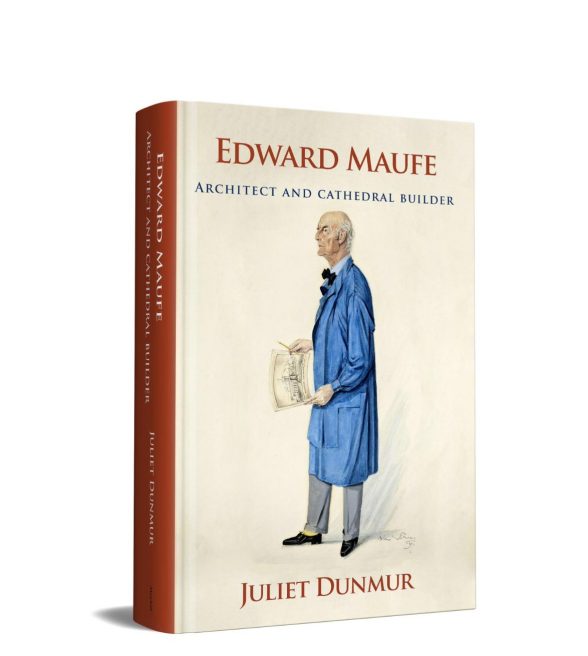This website uses cookies
This website uses cookies to enable it to function properly and to analyse how the website is used. Please click 'Close' to accept and continue using the website.


Edward Maufe: Architect and Cathedral Building
Juliet Dunmur (Molyhill Books, 360pp, £20)
Reviewed by Clare Price
2019

There are few monographs on ecclesiastical architects of the 20th century. Research for our recent book 100 Churches 100 Years made clear how many major figures have no publication devoted to them – even designing a cathedral does not seem to qualify them for individual treatment. Giles Gilbert Scott, for example, despite his pedigree as a member of one of the ‘royal families’ of architecture, still languishes without such coverage. So this book on the designer of Guildford Cathedral, Edward Maufe, is very welcome. As Maufe’s granddaughter, Juliet Dunmur is well qualified for this task.
This is a work filled with detailed research and benefiting from access to family papers. But Dunmur does not confine herself to the well-trodden path of profiling the career of an illustrious male architect; she also brings into the limelight her equally fascinating grandmother, Prudence Maufe. Prudence’s own history as a Director of Heal’s is interesting in its own right (see C20 issue 2016/2), but Dunmur also gives an insight into Prudence as co-creator of many of Edward Maufe’s designs and gives her the prominence she deserves. Dunmur tackles that difficult task of balancing a family history with an architectural monograph, producing a successful account of an influential power couple in the inter-war period.
Dunmur begins by tracing the family influences that shaped Edward Maufe in his early years: he was related to the planned industrial village pioneer Titus Salt, and lived in William Morris’s Red House. She then moves on to Prudence, educated in Paris and
at the Royal College of Art (where she learned her exemplary embroidery skills). Unsurprisingly, and rightly, Dunmur gives an entire chapter to Edward Maufe’s most famous commission, Guildford Cathedral. A thirty-year project spanning the most productive years of his career, this is his legacy, and Dunmur includes a wealth of information on the difficulties involved in its gestation and construction, as well as insights into his relationships with the craftsmen involved.
I was a little disappointed that more room is not devoted to the extremely beautiful St Thomas’s church, Hanwell, known as ‘Little Guildford’ where Maufe (clearly with help from Prudence) worked out many of the details of design and decoration later used at the cathedral. The Maufes were involved in many non-ecclesiastical projects such as work for Oxbridge Colleges, but Dunmur concentrates particularly on the Inns of Court and the Commonwealth War Graves Commission, undertakings full of variety and interest. She also dwells for a chapter on a more personal project, the alteration and development of their family home, Shepherd’s Hill. The quality of the Maufe’s work here is now recognised by a Grade II* listing.
Apart from architecture, there is much else to amuse and surprise in this book: the unconventional marriage that the couple enjoyed, the social circles in which they moved and the story of how each changed their names. To find out more I suggest that you explore the book yourself.
We are still populating our book review section. You will be able to search by book name, author or date of publication.

Become a C20 member today and help save our modern design heritage.